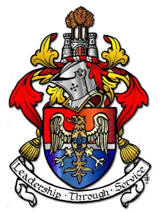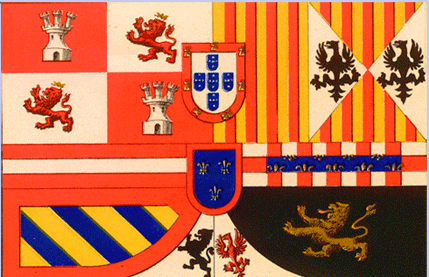| Royal Ancestors from Spain |
|
|
Royal Ancestors from Spain INTRODUCTION The first of the East Mediterranean peoples known to have voyaged to the peninsula were the seafaring Phoenicians, probably in the 11th century BC. Traders from Rhodes and the Greek cities followed, establishing colonies on the Mediterranean coast and occasionally venturing into the Atlantic through the Strait of Gibraltar, known to the ancients as the Pillars of Hercules. In the second half of the third century BC the African state of Carthage began to exploit the peninsula. Under the general Hamilcar Barca, a large part of the peninsula was conquered in a campaign from 237 to 228 BC, and in the latter year Carthage founded the city of Barcelona. Other colonies were established along the coast, notably Carthago Nova. The expansion of Carthage in the peninsula was viewed unfavorably by Rome. in 219 BC, violating a previous Carthage-Rome agreement delimiting Carthaginian territory, the Carthaginian general Hannibal destroyed the Greek colony of Saguntum and precipitated the Second Punic War. Carthage was forced to evacuate the peninsula in 206 BC. Nine years later Rome divided the peninsula into two provinces, Hispania Citerior, in the valley of the Ebro River, and Hispania Ulterior, in the plain penetrated by the Guanalquivit River. The tribes of the extreme North did not surrender their independence to Rome until 19 BC. Under the Romans, Hispania took its final form as three provinces: Lusitania, approximating modern Portugal; Baetica, in the South approximating Western Andalusia; and Hispania Tarraconensis, the central plateau and the North, North West, and the East Coast above Cartagena. From the final submission of the Iberian tribes until the dissolution of the Western Roman Empire in the late fourth century AD, Hispania was one of the most prosperous areas of Roman power. Its farms were a major source of Roman grains, and from its mines came iron, copper, lead, gold, and silver. In 409 AD Teutonic invaders crossed the Pyranees. Alans, Vandals, and Suevi swept over an desolated the peninsula. The unity of Hispania under Rome was destroyed, and not entirely recreated for more than a thousand years. In an attempt to stem the havoc brought by the barbarian invasions, Rome appealed to the Visigoths who in 412 AD brought their armies into the region and within seven years became the dominant power. The Visigothic kingdom of Toulouse, a nominal vassal of Rome was established in 419, and at its fullest extent included the territory from the Strait of Gibraltar North to the Loire River. For three centuries (419-711) the kings of Toulouse implanted Roman culture and Christianity in the peninsula. Euric ruled (466-484) at the height of Visigothic power, and codified the Roman and Gothic law. Leovigild (r. 569-586) effected the final subjugation of the Suivi tribes and united the Roman and Visigothic elements of the peninsula into a single people. Reccared (r. 586-601) established Roman Catholicism as the official state religion. In 711 a Moslem, or Saracen, army composed of Arabs, Berbers, and Syrians, invaded the peninsula across the strait from Africa. On July 19, 711 they defeated Roderick, last of the Visigothic kings of Spain, at the battle of Rio Barbate. By 719, the Moslem power was supreme to the Pyrenese. The invading forces crossed the mountains, but their progress northward was arrested at the battle of Poitiers (732) by the Frankish ruler Charles Martel. From that time on the Moslems concentrated on development of the peninsula. For the first few years of their rule the Arabs, dominant element in the Saracen forces, held the peninsula as a dependency of the Province of North Africa, a division of the caliphate of Damascus. After 717 the country was ruled by emirs appointed by the caliphs and frequently neglectful of their duties; misrule resulted in the appointment and deposition of twenty successive emirs during the subsequent forty years. This state of affairs was ended by a struggle between the Ommiad and Abbasside factions for control of the Damascus caliphate. The last of the Spanish emirs, Yusuf, favored the Abbassides, but the local officials of the emirate supported the Ommiads. The Ommiad faction invited Abd-er-Rahman a member of the family, to become the independent ruler of Spain. In 756 Abd-er-Rahman founded the powerful and independent emirate which later developed into the caliphate of Cordoba. During the establishment of the Saracen power, a remnant of Christian rule was preserved in the North portion of the peninsula. The genesis for the most important Christian states of the North peninsula was the small kingdom of Asturias, founded about 718 by Pelayo, a Visigothic chieftain and successor to Roderick. Alfonso the Catholic (r. 739-757), the son-in-law of Pelayo, conquered nearly all the region known as Galicia and recaptured most of Leon and was the crowned king of Leon and Asturias. Alfonso III greatly extended these territories. During the 9th century the region of Navarre, under Sancho I became an independent kingdom. As the kings of Leon expanded their domains to the East, they reached, in the early 10th century, Burgos. The castles built to guard the frontiers of newly acquired territory gave this region the popular name of Castilla and, ultimately, Castule. Under Count Fernan Gonzalez (910-970) the region became independent of Leon and in 932 the Count declared himself the first king of Castile. In the 11th century a considerable part of Aragon was captured from the Moslems by Sancho III of Navarre, who also conquered Leon and Castile, and in 1033 made his son Ferdinand I king of Castile. This temporary unity came to an end at Sancho’s death, when his domains were divided among his sons. The most prominent of Sancho’s sons was Ferdinand I of Castile, who acquired Leon in 1037, took the Moorish section of Galicia, and set up a vassal country in what is now North Portugal. With North Spain consolidated, Ferdinand, in 1056 proclaimed himself emperor of Spain and initiated the period of re-conquest from the Moslems. As a result of the dissolution of the central Moorish power, the Christian kings of North Spain were able to gain the advantage, subduing some Moorish states and making others tributary. A temporary revival of central power was instituted by Abbidid kings of Seville. Alfonso VI, King of Castile and Leon, led his attacking armies South, and by 1086 was master of Toledo. Abbad III of Seville then asked the aid of the Almoravides. a Moslem sect of North Africa. The Almoravides crossed to Spain but after defeating Alfonso (1086) turned against the Spanish Moors, and by the beginning of the 12th century the Almoravide ruler was the sovereign of Moslem Spain. The Almoravide dynasty was short-lived, and its power passed to a second African sect, the Almohades who invaded Spain in 1145 and became the masters of the Moslem areas within five years. The Christian kings, meanwhile, continued their advance. In a great battle fought on the plains of Toledo in July 1212, the Almohades were defeated by the united Christian power, and expelled from Spain shortly thereafter. The Moorish power was then limited to the kingdom of Granada which endured until 1492 and was one of the greatest and most splendid Moslem realms. For the next two centuries Spain consisted, except for those regions still controlled by Saracens, of two great kingdoms: in the West, Castile and Leon, including Austrias, Cordoba, Estremadure, Galicia, Jaen, and Seville; and in the East Aragon, including Barcelona, Calencia, and the Balearic Islands. Both realms were characterized, as a legacy of their previous histories, by a diversity of language dialects, by composite populations, and by divergent political forms. In 1469 the marriage of Isabella I Queen of Castile and Ferdinand II King of Aragon, initiated the developments which made Spain a great world power.
Castile
and Leon
Navarre
Pamplona
Aragon and Asturias
Visigoths
|

